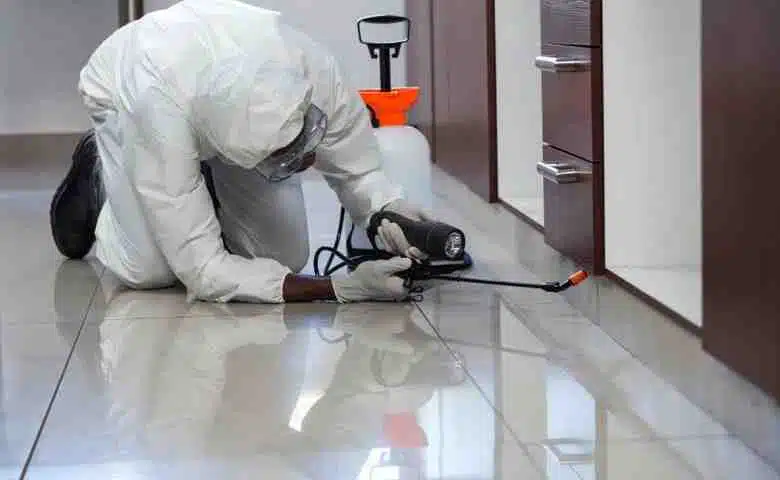How to Prevent Flies in Hotel Dining Areas Effectively
Share
Maintaining a pristine and inviting dining area in a hotel is crucial for guest satisfaction. One of the most common nuisances that can disrupt this atmosphere is the presence of flies. Understanding how to prevent flies in hotel dining areas is not only essential for maintaining a clean environment but also for upholding the hotel's reputation.
Flies are not just a minor annoyance; they are carriers of various diseases and can easily ruin a guest's dining experience. Therefore, implementing effective strategies to keep these pests at bay is imperative. In this article, we will explore several methods and practices that can help in minimizing the presence of flies in hotel dining areas.

Understanding the Threat of Flies
Flies are more than just annoying; they are vectors for disease transmission. They can carry bacteria from decomposing matter and transfer it to food and surfaces, leading to potential outbreaks of foodborne illnesses. This makes it critical for hotels to take proactive measures in preventing fly infestations.
Why Flies Are Attracted to Dining Areas
Understanding why flies are attracted to dining areas is the first step in preventing them. Flies are drawn to food, garbage, and moisture, all of which can be found in abundance in dining areas. The smell of food, coupled with the warmth of the environment, makes these areas particularly inviting to flies.
Ensuring that food is properly covered and stored, and that garbage bins are sealed, can significantly reduce the attractiveness of dining areas to flies. Regular cleaning schedules and immediate disposal of waste are essential practices in maintaining a fly-free environment.
Implementing Effective Fly Prevention Strategies
To effectively prevent flies in hotel dining areas, a combination of sanitation, exclusion, and chemical controls should be employed. Each of these strategies plays a vital role in maintaining a fly-free environment.
Sanitation
Maintaining impeccable cleanliness is the cornerstone of any fly prevention strategy. Regular cleaning of floors, tables, and kitchen areas ensures that food residues and organic matter, which attract flies, are minimized. Special attention should be given to cleaning around garbage disposal areas, as outlined in this resource.
Additionally, implementing a strict waste management system is crucial. Garbage bins should be emptied regularly, and lids should be tightly closed. Using garbage bags that are less permeable to odors can also help in reducing fly attraction.
Exclusion
Preventing flies from entering dining areas is another effective strategy. Installing air curtains at entry points can deter flies from entering. Additionally, maintaining doors and windows closed, or having them fitted with screens, can significantly reduce fly ingress.
Regular inspections should be conducted to ensure that there are no gaps or holes through which flies can enter. This proactive approach is essential in maintaining a fly-free dining environment.
Chemical Controls
In some cases, chemical controls may be necessary to manage fly populations effectively. This can include the use of insecticides or fly baits. However, it is crucial to use these chemicals judiciously, as they can pose health risks to guests and staff if not handled properly.
Engaging a professional pest control service can provide hotels with expert guidance on the safe and effective use of chemical controls. Services like USX Pest Control offer tailored solutions for the hospitality industry.
Monitoring and Maintenance
Consistent monitoring and maintenance are key to ensuring that fly prevention strategies remain effective. Regular inspections and adjustments to the implemented strategies can help in quickly identifying and addressing any potential fly problems.
Using technology to monitor pest activity can significantly enhance a hotel's pest management program. For more insights on pest control technology, consider exploring innovative solutions.
Conclusion
Preventing flies in hotel dining areas is a multifaceted approach that requires diligence and consistent effort. By understanding the factors that attract flies and implementing comprehensive sanitation, exclusion, and chemical control strategies, hotels can maintain a clean and inviting dining environment for their guests.
For more detailed strategies on pest management in hotels, you might find this study useful.

FAQs
What are the common diseases spread by flies?
Flies can carry and spread a variety of diseases, including salmonellosis, typhoid fever, and cholera. These diseases are transmitted when flies pick up bacteria from decomposing matter and transfer it to food and surfaces.
How can staff be trained to prevent flies?
Staff can be trained through regular workshops that focus on the importance of sanitation and the correct procedures for waste management. Training should also cover the proper use of equipment designed to exclude flies from dining areas.
Are natural fly repellents effective?
Natural fly repellents, such as essential oils like peppermint and eucalyptus, can be effective to some extent. However, they are usually best used in conjunction with other control measures to ensure comprehensive fly prevention.
